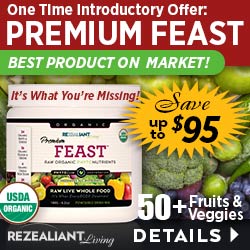- 1. Know Your Whole Food Labels and Certifications
- 2. Shop Seasonally and Locally for the Freshest Produce
- 3. Plan Your Whole Food Meals in Advance to Reduce Waste
- 4. Build Strong Relationships with Local Farmers
- 5. Prioritize Quality Over Quantity in Your Whole Food Shopping
- 6. Use Smart Shopping Techniques and Apps
- 7. Consider Environmental Impact and Sustainability
- 8. Steer Clear of Processed Foods and Focus on Whole Foods
- 9. Utilize Community-Supported Agriculture and Co-ops
- 10. Educate Yourself Continuously on Nutrition Trends and Whole Food Benefits
1. Know Your Whole Food Labels and Certifications
Understanding Labels Is Key to Informed Whole Food Shopping
In 2025, one of the most vital tips for whole food shopping is to become familiar with labels and certifications on food packaging. Knowing what “organic,” “non-GMO,” or “certified humane” truly means helps you make conscious choices. These labels are designed to signal certain standards that align with health and sustainability goals.
For example, organic certification ensures the produce was grown without synthetic pesticides or fertilizers. Recognizing these labels can save you money and time, preventing you from inadvertently purchasing less wholesome options. As consumers become more educated, brands are also more transparent, making it easier to select genuinely nutritious whole foods.
Donât forget to check for local certifications or farm-specific labels, which can indicate that your food was produced close to home under strict standards. This not only supports local economies but often guarantees higher freshness and better nutrient retentionâkey factors in whole food shopping at its best.
Smart Ways to Decode Food Labels
Decoding food labels can seem overwhelming at first, but with a few simple tips, it becomes second nature. Focus on ingredients listsâfewer is often better. Look for whole food ingredients listed plainly without additives or preservatives. For packaged products, check for the presence of non-GMO, organic, or sustainably sourced badges.
Always verify the certifying body, such as USDA Organic or Non-GMO Project, ensuring credibility. Remember that organic produce doesn’t necessarily mean pesticide-free, but it often involves fewer synthetic chemicals. Learning to interpret these labels can significantly improve your whole food shopping experience and nutritional intake.
2. Shop Seasonally and Locally for the Freshest Produce
Why Seasonal and Local Matters in 2025
One of the most effective tips for whole food shopping in 2025 is to prioritize seasonal and locally sourced produce. Seasonal foods are fresher, tastier, and often more affordable because they don’t require long-distance transportation. This approach also reduces your carbon footprint and supports local farmers.
In 2025, advancements in local produce markets and farm-to-table initiatives make it easier than ever to access seasonal foods. Shopping within your local community not only improves food quality but also aligns with your sustainability goalsâcrucial aspects of whole food shopping today.
Besides taste and sustainability, eating seasonally offers health benefits. Fruits and vegetables are at their peak nutrient levels, so incorporating diverse seasonal produce can diversify your diet and enhance overall wellness.
Practical Tips for Shopping Seasonally and Locally
Plan your weekly meals around what’s in season in 2025. Use local farm stands, farmers markets, or community-supported agriculture (CSA) memberships to access fresh, seasonal foods directly from growers. Keep a seasonal produce calendar handy to know whatâs at its peak.
Engage with farmers and vendors; ask about their farming practices and harvest schedules. This adds an educational layer to your whole food shopping and helps you build trust with sources of your food. Incorporating seasonal and local foods ensures youâre Getting the best of what nature offers, supporting your health and the environment simultaneously.
3. Plan Your Whole Food Meals in Advance to Reduce Waste
Meal Planning Benefits for Whole Food Shopping
Effective meal planning is a cornerstone of successful whole food shopping in 2025. When you plan ahead, you reduce impulse buys, minimize food waste, and ensure balanced, nutritious meals. A well-thought-out plan helps you buy only what you need and prioritize whole, unprocessed ingredients.
With the rise of smart kitchen apps and meal planners, you can now organize your grocery list based on seasonal produce, recipes, and dietary goals. This technological integration makes whole food shopping more efficient and less stressful.
Moreover, prepping ingredients in advance saves time during busy weekdays, encouraging you to cook more at homeâan essential habit for health-conscious consumers. Overall, meal planning streamlines your whole food shopping routine, making it easier to stick to healthy choices.
Tips to Kickstart Your Meal Planning
Create a weekly menu that revolves around whole foodsâthink fresh vegetables, whole grains, lean proteins, and healthy fats. Use your personal or shared digital calendar to block out time for shopping and prep.
Make a comprehensive shopping list based on your menu, and organize it by store sections. Stick to your list to avoid unnecessary purchases. Over time, you’ll develop a system that reduces waste, saves money, and boosts your nutritional intake through consistent whole food shopping.
4. Build Strong Relationships with Local Farmers
Trust and Transparency in Local Food Sourcing
In 2025, building relationships with local farmers is an important tip for whole food shopping. Direct interactions foster trust, ensure product quality, and often lead to fresher, more flavorful foods. Plus, farmers appreciate engaged customers who value sustainable practices.
Visit farms, attend open days, or join community-supported agriculture (CSA) programs. These interactions allow you to learn about growing methods, harvest timing, and sustainable practicesâinformation that directly impacts the nutritional quality of your food choices.
Developing these partnerships also encourages farmers to prioritize organic and eco-friendly farming methods. This creates a more transparent, responsible supply chain for your whole food shopping, aligning with your health and environmental values.
Practical Ways to Connect with Local Farmers
Join local farming groups or co-ops, and subscribe to newsletters or social media pages highlighting their seasonal offerings. Participate in farm visits and ask questions about their practices and certifications.
Support farmers by purchasing directly from them; this often guarantees better prices and fresher selections. Remember, strong relationships can lead to exclusive access to rare or specialty whole foods, enriching your diet and supporting sustainable agriculture.
5. Prioritize Quality Over Quantity in Your Whole Food Shopping
The Benefits of Choosing Quality Whole Foods
In 2025, focusing on quality rather than quantity is a vital tip for whole food shopping. High-quality foods typically contain more nutrients, flavor, and freshness, making your meals more satisfying and healthful. This approach might seem pricier upfront but can lead to savings by reducing waste and the need for supplements.
Look for whole foods that are minimally processed, organic when possible, and harvested at peak ripeness. These choices support your overall wellness and can enhance your immune system and energy levels.
Investing in quality foods also encourages better ethical standards in production. Supporting brands that prioritize sustainable farming, humane animal treatment, and eco-friendly practices ensures your whole food shopping aligns with your values.
Tips to Purchase High-Quality Whole Foods
Always inspect produce for freshnessâfirm, vibrant, and free from blemishes. When buying proteins or dairy, seek items labeled with clear quality certifications and check expiration dates.
Remember, building relationships with reputable suppliers can help you access higher-quality whole foods regularly. It pays off in taste, nutrition, and environmental footprintâkey concerns in 2025âs health-conscious market.
6. Use Smart Shopping Techniques and Apps
Leveraging Technology for Whole Food Shopping
The rise of smart apps in 2025 makes whole food shopping more efficient than ever. Use mobile apps to compare prices, find local stores with the best deals, and access nutrition information. These tools help maximize your budget without compromising quality.
Subscription services and digital marketplaces connect you directly with farmers or sustainable producers, providing fresh options and reducing middlemen. Many apps now feature filters for organic, non-GMO, and environmentally friendly productsâmaking focused shopping easier.
Besides saving money, technology can help you track your consumption patterns, plan meals, and stick to seasonal eating, all integral parts of successful whole food shopping.
Huge Discount on the Best Certified Organic Whole Food Supplement!
Best Apps and Tools for 2025
Research and select apps with high user reviews for local produce finder, meal planning, and nutritional tracking. Use barcode scanners to verify product authenticity and certifications.
Participate in online communities or forums to share tips and learn new strategies for whole food shopping. Digital tools are transforming how we access, select, and enjoy nourishing foods.
7. Consider Environmental Impact and Sustainability
Sustainable Choices in Whole Food Shopping
Environmental consciousness is central to modern whole food shopping. In 2025, making sustainable choices includes opting for organic, regenerative, and ethically farmed foods. These practices help preserve ecosystems, reduce pollution, and lower greenhouse gas emissions.
Use reusable shopping bags, avoid single-use plastics, and look for packaging from sustainable materials. Supporting brands that invest in sustainability initiatives ensures your shopping habits positively impact the planet.
Additionally, eating plant-based whole foods more often can significantly reduce your carbon footprint. Incorporate more beans, lentils, and vegetables into your diet to contribute to environmental health while enjoying delicious, nutritious meals.
How to Assess a Productâs Sustainability
Check for certifications like Fair Trade, Rainforest Alliance, or Organic. Research the supply chain to understand the environmental practices behind your choices. Transparent brands are proud to showcase their sustainability efforts.
Participate in local sustainability events or workshops to stay informed about best practices. Your efforts to consider environmental impact in whole food shopping can lead to lasting positive change.
8. Steer Clear of Processed Foods and Focus on Whole Foods
Why Processed Foods Should Be Minimized in 2025
In the era of health-conscious living, avoiding processed foods is one of the most impactful tips for whole food shopping. Processed foods often contain added sugars, preservatives, and artificial flavors, which can negate health benefits.
Focusing on whole foods means emphasizing unrefined grains, fresh produce, nuts, seeds, and lean proteins. These foods retain their natural nutrients and support optimal bodily functions.
Reducing processed food intake can also help prevent chronic diseases like obesity, diabetes, and heart disease. Your whole food shopping habits are crucial for cultivating a healthier lifestyle.
Practical Tips to Avoid Processed Foods
Read labels carefullyâif an ingredient list is long or contains unfamiliar additives, pass on it. Shop around the perimeter of grocery stores where fresh, whole foods are typically located.
Experiment with cooking at home using fresh ingredients to take control of what goes into your meals. This approach enhances flavor and nutrient density, making your whole food shopping more rewarding.
9. Utilize Community-Supported Agriculture and Co-ops
Joining Community Programs for Whole Food Benefits
In 2025, community-supported agriculture (CSA) programs and co-ops are valuable resources for whole food shopping. These initiatives connect consumers directly with local producers, often offering organic and sustainable options at fair prices.
By participating, you receive fresh, seasonal produce regularly, and you also foster a sense of community and support local economic growth. Many co-ops source from sustainable farms, aligning with your eco-conscious goals.
Moreover, such programs encourage variety in your diet and help you learn more about seasonal eating and traditional farming methods. It’s a win for your health, wallet, and environmental impact.
How to Get Started with CSA and Co-ops
Research local CSAs or co-ops online or through community boards. Sign up early, especially for high-demand seasons. Engage with farm representatives to learn about their practices and offerings.
Share your experiences and recipes to deepen your connection and get the most out of your whole food shopping through these community channels.
10. Educate Yourself Continuously on Nutrition Trends and Whole Food Benefits
Stay Up-to-Date for Effective Whole Food Shopping in 2025
The landscape of health and nutrition is always evolving. Staying informed about the latest research, trends, and innovations in whole food shopping is essential for making the best choices. Subscribe to reputable sources and read scientific studies to understand what truly benefits your health.
In 2025, personalized nutrition guides and DNA-based diet plans are becoming more mainstream, helping you tailor your whole food shopping habits to suit your unique needs. Combine this with traditional knowledge for a balanced approach.
Continuous education empowers you to adapt your grocery list, meal plans, and lifestyle choices, ensuring longevity in your healthy eating journey.
Resources for Ongoing Learning
Follow trusted health and nutrition blogs, attend workshops, and participate in online courses focused on whole foods. Engage with community nutritionists and dietitians who can provide personalized advice.
Being proactive about learning ensures your whole food shopping remains effective, enjoyable, and aligned with 2025 trends.
Conclusion
Mastering the art of whole food shopping in 2025 involves understanding labels, supporting local and sustainable sources, planning ahead, and staying informed. Incorporating these tips can significantly improve your health, reduce your environmental impact, and connect you with a community of like-minded individuals. Remember, the key to success in this journey is mindful purchasing and continuous education. By applying these strategies, your whole food shopping will become a seamless, rewarding part of your lifestyleâtoday and into the future.
Frequently Asked Questions
1. What is the best way to start whole food shopping in 2025?
Begin by educating yourself on labels and certifications, then explore local markets and CSA programs. Planning your meals and making a detailed shopping list helps ensure you buy only what you need.
2. How can I ensure the foods I buy are sustainable?
Look for certifications like Organic, Fair Trade, and Rainforest Alliance. Support local farmers, and prioritize plant-based and regenerative farming practices. Using sustainable packaging and reducing waste also makes a difference.
3. What are some common mistakes to avoid in whole food shopping?
Avoid impulse buying processed foods, overlook labels, and ignore seasonal considerations. Also, donât compromise on quality for price aloneâinvesting in nutrient-dense foods pays off long-term.
4. How does whole food shopping impact my health?
Focusing on whole foods provides essential nutrients, antioxidants, and fiber, which boost immunity, improve digestion, and reduce the risk of chronic diseases. Itâs a foundational aspect of a healthy lifestyle in 2025.




